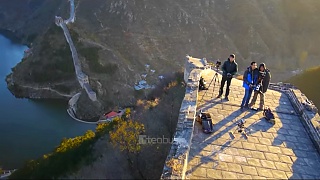Night walk in an ancient town clinging to waterfalls.
With Walk East ...
[640],shadow=true,start=,stop=
Live more ...
 FuRong Town, HuNan province
FuRong Town, HuNan provinceNight walk in an ancient town clinging to waterfalls.
With Walk East ...
[640],shadow=true,start=,stop=

|
With Inside China Business ...
|

|
Intrepid Italians live more ...
|

|

|
With Walk East ...
Driving through the downtown ...
|

|
Sections of the Great Wall near BeiJing, including HuangHua, filmed from a small, remote-controlled quad-copter drone; awesome ...
|

|
30 minutes east of Beijing by high speed rail lies the important coastal port city of TianJin
|

|
The West's new cold war is hotting up. What is the US up to in all China's neighbors ...
Derailing China's Belt and Road Initiative, this time in Pakistan ...
Malaysia ...
|

|
印象桂林
GuangXi province, south China.
Awesome, beautiful landscapes and culture ...
Amazing CGI.
|

|
With Jason Fung ...
|